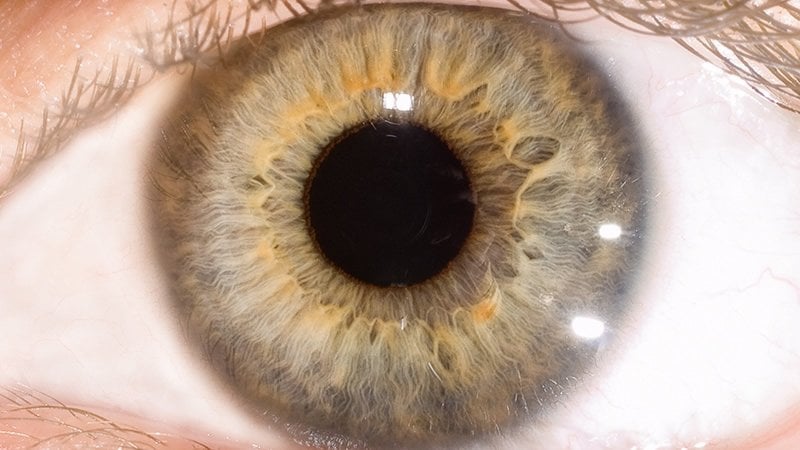Summary: Eye-tracking and pupil dilation may be a new way to measure a person’s hearing ability.
Source: University of Oregon
In 1998, University of Oregon researcher Avinash Singh Bala was working with barn owls in an Institute of Neuroscience lab when the birds’ eyes caught his attention.
The usual research done in the lab, led by Terry Takahashi, explores, at a fundamental level, how barn owls process sounds, with the idea that such knowledge could lead to improved hearing devices for people.
But those eyes. Every time the owls heard an unexpected sound, their eyes dilated.
“So, we asked, might this work in humans?” Bala said. “We thought, if so, it would be a great way to assess hearing in people who cannot respond by pushing a button, raising a hand or talking, such as babies, older children with developmental deficits and adults who are suffering from a debilitating disorder or are too sick to respond.”
Over the next decade, Bala and Takahashi, as free time outside their primary research allowed, pursued ideas on how to use the eyes as a window to hearing. They experimented, finding similar involuntary dilation in humans. They tweaked a possible approach, aiming for sensitivity that might equal that achieved with traditional tone-and-response testing.
“We presented early data analyses at conferences, and there was a lot of resistance to the idea that by looking at an involuntary response we could get results as good as button-press data,” Bala said.
Last month, the two UO neuroscientists published a freely accessible paper in the Journal of the Association for Research in Otolaryngology that solidifies their case. They used eye-tracking technology simultaneously as they conducted traditional hearing exams with 31 adults in a quiet room.
Dilation was monitored for about three seconds as participants stared at a dot on a monitor while a tone was played. To avoid being fooled by pupil reactions generated by pushing a response button, subjects’ responses were delayed until the dot was replaced by a question mark, when eye-tracking stopped.
Levels of dilation seen throughout the testing directly reflected the participants’ subsequent push-button responses on whether or not a tone was heard. That, Bala said, allowed his team, which also included former doctoral student and co-author Elizabeth Whitchurch, “to see and establish causality.”
“This study is a proof of concept that this is possible,” Bala said. “The first time we tested a human subject’s pupil response was in 1999. We knew it could work, but we had to optimize the approach for capturing the detection of the quietest sounds.”
Takahashi said the initial discovery was completely accidental.

“If we hadn’t been working with owls, we wouldn’t have known about this possible human diagnostic technique,” he said. “This is a really good example of how animal-based research can benefit advances in human diagnostics.”
The testing in the newly published research, funded initially by internal grants, was done using conventional, commercially available hearing and eye-tracking technologies.
Bala and Takahashi are now collaborating with Dare Baldwin, a professor of psychology, on developing their own technology for testing with babies. The effort is being supported by a 2015 Incubating Interdisciplinary Initiatives award from the Office of the Vice President for Research and Innovation and a recent grant from the University Venture Development Fund.
Bala and Takahashi also have launched a UO spinout, Perceptivo LLC, to pursue development of an infant-hearing assessment.
Source:
University of Oregon
Media Contacts:
Jim Barlow – University of Oregon
Image Source:
The image is credited to University of Oregon.
Original Research: Open access
“Human Auditory Detection and Discrimination Measured with the Pupil Dilation Response”. Avinash D. S. Bala, Elizabeth A. Whitchurch, Terry T. Takahashi.
Journal of the Association for Research in Otolaryngology doi:10.1007/s10162-019-00739-x.
Abstract
Human Auditory Detection and Discrimination Measured with the Pupil Dilation Response
In the standard Hughson-Westlake hearing tests (Carhart and Jerger 1959), patient responses like a button press, raised hand, or verbal response are used to assess detection of brief test signals such as tones of varying pitch and level. Because of its reliance on voluntary responses, Hughson-Westlake audiometry is not suitable for patients who cannot follow instructions reliably, such as pre-lingual infants (Northern and Downs 2002). As an alternative approach, we explored the use of the pupillary dilation response (PDR), a short-latency component of the orienting response evoked by novel stimuli, as an indicator of sound detection. The pupils of 31 adult participants (median age 24 years) were monitored with an infrared video camera during a standard hearing test in which they indicated by button press whether or not they heard narrowband noises centered at 1, 2, 4, and 8 kHz. Tests were conducted in a quiet, carpeted office. Pupil size was summed over the first 1750 ms after stimulus delivery, excluding later dilations linked to expenditure of cognitive effort (Kahneman and Beatty 1966; Kahneman et al. 1969). The PDR yielded thresholds comparable to the standard test at all center frequencies tested, suggesting that the PDR is as sensitive as traditional methods of assessing detection. We also tested the effects of repeating a stimulus on the habituation of the PDR. Results showed that habituation can be minimized by operating at near-threshold stimulus levels. At sound levels well above threshold, the PDR habituated but could be recovered by changing the frequency or sound level, suggesting that the PDR can also be used to test stimulus discrimination. Given these features, the PDR may be useful as an audiometric tool or as a means of assessing auditory discrimination in those who cannot produce a reliable voluntary response.






